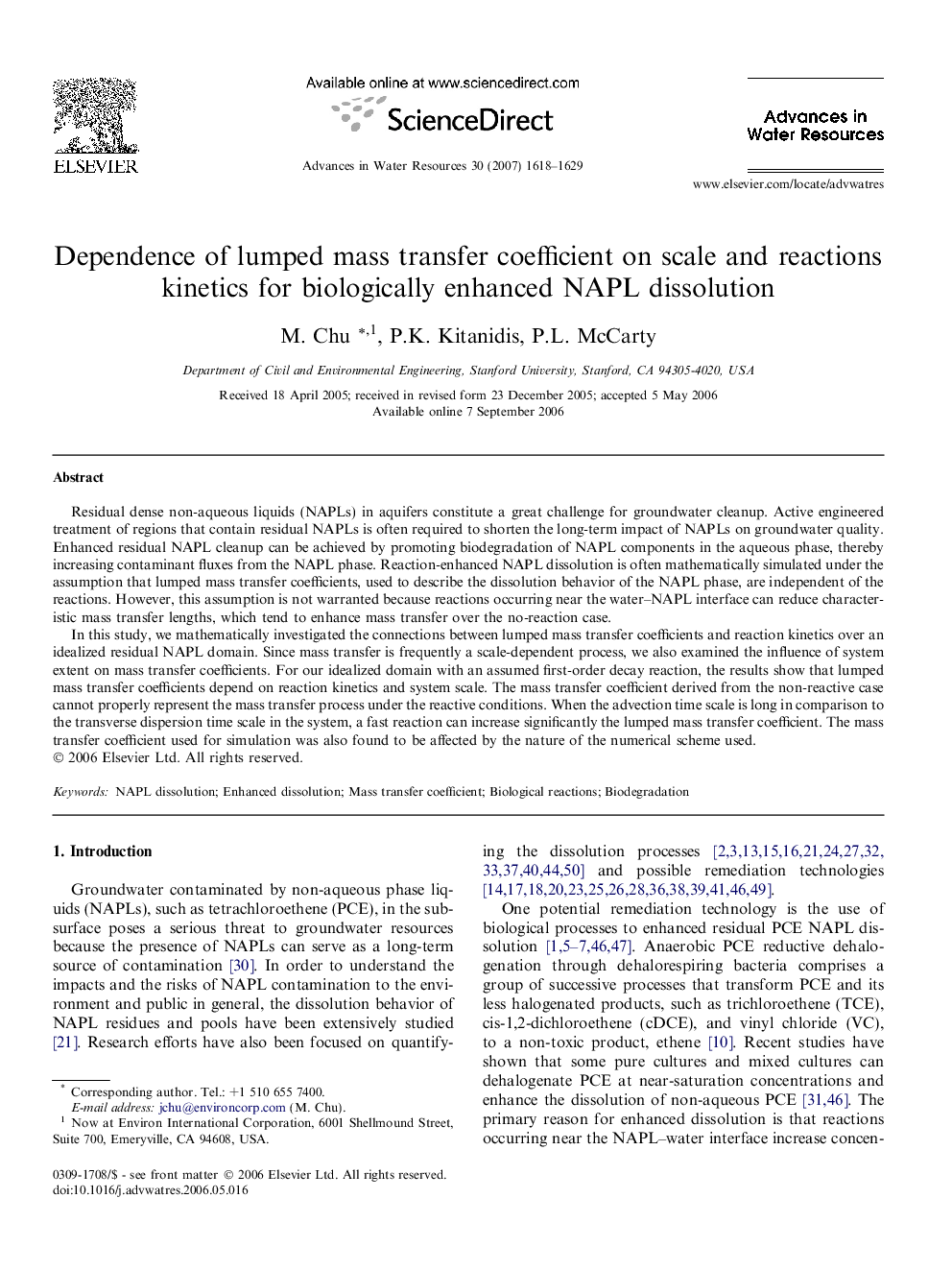| Article ID | Journal | Published Year | Pages | File Type |
|---|---|---|---|---|
| 4526898 | Advances in Water Resources | 2007 | 12 Pages |
Residual dense non-aqueous liquids (NAPLs) in aquifers constitute a great challenge for groundwater cleanup. Active engineered treatment of regions that contain residual NAPLs is often required to shorten the long-term impact of NAPLs on groundwater quality. Enhanced residual NAPL cleanup can be achieved by promoting biodegradation of NAPL components in the aqueous phase, thereby increasing contaminant fluxes from the NAPL phase. Reaction-enhanced NAPL dissolution is often mathematically simulated under the assumption that lumped mass transfer coefficients, used to describe the dissolution behavior of the NAPL phase, are independent of the reactions. However, this assumption is not warranted because reactions occurring near the water–NAPL interface can reduce characteristic mass transfer lengths, which tend to enhance mass transfer over the no-reaction case.In this study, we mathematically investigated the connections between lumped mass transfer coefficients and reaction kinetics over an idealized residual NAPL domain. Since mass transfer is frequently a scale-dependent process, we also examined the influence of system extent on mass transfer coefficients. For our idealized domain with an assumed first-order decay reaction, the results show that lumped mass transfer coefficients depend on reaction kinetics and system scale. The mass transfer coefficient derived from the non-reactive case cannot properly represent the mass transfer process under the reactive conditions. When the advection time scale is long in comparison to the transverse dispersion time scale in the system, a fast reaction can increase significantly the lumped mass transfer coefficient. The mass transfer coefficient used for simulation was also found to be affected by the nature of the numerical scheme used.
